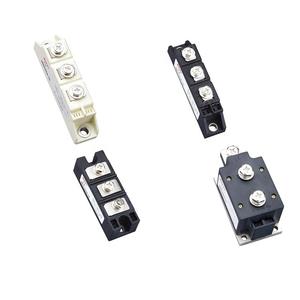Thyristors Online | High-Quality Power Semiconductors
PRODUCT PARAMETERS
Description
Overview of Phase Control Thyristor
A phase control thyristor, often referred to as a triac or SCR (Silicon Controlled Rectifier) in certain applications, is a semiconductor device used for controlling the amount of power delivered to a load by adjusting the phase angle at which the AC waveform is allowed to conduct. This method of control is known as phase angle control or simply phase control. Phase control thyristors are widely used in various applications that require precise regulation of electrical power, such as lighting dimmers, motor speed controls, temperature controllers, and more.
Features of Phase Control Thyristor
Phase Angle Control: Allows adjustment of the conduction point within each half-cycle of the AC waveform, enabling precise control over the average power delivered to the load.
High Efficiency: Operates with minimal losses when conducting, providing efficient power control.
Bidirectional Conductivity (Triacs): For AC applications, triacs can conduct current in both directions, making them suitable for full-wave control of AC loads.
Unidirectional Conductivity (SCRs): SCRs conduct current in one direction only and are typically used for half-wave control of AC or DC loads.
Gate Triggering: Conduction begins when a small current is applied to the gate terminal, allowing for easy control of the turn-on point.
Latching Current: Once triggered, the thyristor continues to conduct until the current through it falls below a certain level called the holding current.
Temperature Sensitivity: Performance can be affected by temperature changes, requiring thermal management considerations in design.
Voltage and Current Ratings: Available in a wide range of voltage and current ratings to suit different application needs.
Noise Generation: Can generate electromagnetic interference (EMI), necessitating proper filtering and shielding in sensitive applications.
Protection Mechanisms: Often include built-in protection against overvoltage and overcurrent conditions to safeguard the device and connected systems.
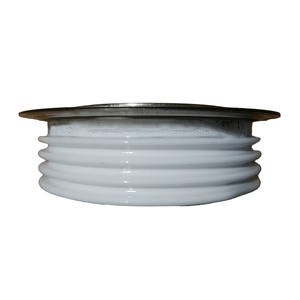
(Phase Controlled Thyristor)
Specification of Phase Controlled Thyristor
The Phase Controlled Thyristor is a high-performance semiconductor device designed for efficient power control and regulation in various industrial and commercial applications. It is engineered to handle high voltage and current levels, making it ideal for use in power electronics, motor control, and AC/DC conversion systems. The thyristor operates by controlling the phase angle of the input voltage, allowing precise regulation of power output. This feature ensures smooth and reliable operation in applications such as dimmers, speed controllers, and voltage regulators.
The device is constructed with a robust silicon structure, ensuring high thermal stability and durability under demanding conditions. It features a low forward voltage drop, which minimizes power loss and enhances energy efficiency. The thyristor is designed to withstand high surge currents and repetitive peak voltages, making it suitable for use in environments with fluctuating power demands. Its compact design and high power density make it an excellent choice for space-constrained applications.
Key specifications include a high blocking voltage capability, typically ranging from 600V to 1600V, and a current rating that can vary from a few amperes to several hundred amperes, depending on the model. The device also offers a fast switching speed, enabling quick response times in dynamic load conditions. It is equipped with a gate trigger circuit that ensures reliable turn-on and turn-off operations, even under high-stress conditions.
The Phase Controlled Thyristor is available in various package types, including TO-220, TO-247, and module configurations, to suit different mounting and cooling requirements. It is designed to operate over a wide temperature range, typically from -40°C to 125°C, ensuring consistent performance in extreme environments. With its advanced design and superior performance characteristics, the Phase Controlled Thyristor is a reliable and efficient solution for modern power control applications.
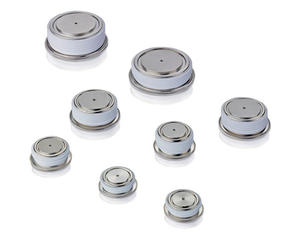
(Phase Controlled Thyristor)
Applications of Phase Controlled Thyristor
Phase Controlled Thyristors (PCTs) are semiconductor devices widely used in power electronics for controlling and regulating electrical power. These devices are essential in applications where precise control of voltage, current, or power is required. One of the most common applications of PCTs is in AC power control systems, such as dimmers for lighting and motor speed controllers. By adjusting the phase angle at which the thyristor is triggered, the amount of power delivered to the load can be finely tuned, enabling energy-efficient operation and smooth control.
In industrial settings, PCTs are extensively used in variable frequency drives (VFDs) and soft starters for electric motors. These applications help reduce mechanical stress on motors during startup and allow for precise speed control, improving efficiency and extending equipment lifespan. Additionally, PCTs play a critical role in power converters, such as AC-to-DC rectifiers and DC-to-AC inverters, which are essential in renewable energy systems like solar and wind power installations. They ensure efficient energy conversion and stable power output.
Another significant application of PCTs is in high-power systems like HVDC (High Voltage Direct Current) transmission. These systems rely on thyristors to convert AC power to DC for long-distance transmission and then back to AC at the destination, minimizing energy losses. PCTs are also used in welding equipment, where they provide precise control over the welding current, ensuring consistent and high-quality welds.
In consumer electronics, PCTs are found in devices like electric heaters, where they regulate temperature by controlling the power supplied to heating elements. Their ability to handle high voltages and currents makes them ideal for such applications. Overall, Phase Controlled Thyristors are versatile components that enable efficient power management, energy savings, and precise control across a wide range of industries and applications.
Company Profile
Luoyang Datang Energy Tech Co.Ltd(sales@pddn.com) is one of the leading enterprises in power electronics technology and power products, which is fully involved in developing solar inverters, transformers, voltage regulators, distribution cabinets, thyristors, modules, diodes, heaters, and other electronic devices or semiconductors. We will be committed to providing users with high-quality, efficient products and considerate service.
It accepts payment via Credit Card, T/T, West Union, and Paypal. PDDN will ship the goods to customers overseas through FedEx, DHL, by sea, or by air. If you want high-quality Phase Controlled Thyristor, please send us inquiries; we will be here to help you.
Payment Methods
L/C, T/T, Western Union, Paypal, Credit Card etc.
Shipment
By sea, by air, by express, as customers request.
Storage Conditions
1) Store in a dry environment at room temperature.
2) Avoid damp and high temperature.
3) Use immediately after opening the inner packing bag.
5 FAQs of Phase Controlled Thyristor
A Phase Controlled Thyristor (PCT) is a semiconductor device widely used in power control applications, such as motor speed control, lighting dimming, and voltage regulation. Here are five frequently asked questions about Phase Controlled Thyristors:
1. **What is a Phase Controlled Thyristor, and how does it work?**
A Phase Controlled Thyristor is a type of thyristor that regulates power by controlling the phase angle of the input voltage. It operates by delaying the firing angle of the thyristor, which determines the portion of the AC waveform that is allowed to pass through. By adjusting this phase angle, the output voltage or current can be precisely controlled, making it ideal for applications requiring variable power delivery.
2. **What are the key applications of Phase Controlled Thyristors?**
Phase Controlled Thyristors are commonly used in industrial and consumer applications, including motor speed control in machinery, dimming systems for lighting, and voltage regulation in power supplies. They are also employed in heating control systems, battery chargers, and AC/DC converters due to their ability to handle high power levels efficiently.
3. **What are the advantages of using a Phase Controlled Thyristor?**
These devices offer several benefits, such as high efficiency, precise control over power output, and the ability to handle high voltage and current levels. They are also compact, reliable, and have a long operational life, making them suitable for demanding environments.
4. **What are the limitations of Phase Controlled Thyristors?**
One limitation is that they generate harmonic distortion in the power supply, which can affect other connected devices. Additionally, they require careful thermal management, as excessive heat can reduce their performance and lifespan. Proper snubber circuits and cooling systems are often needed to mitigate these issues.
5. **How do I select the right Phase Controlled Thyristor for my application?**
When choosing a Phase Controlled Thyristor, consider factors such as voltage and current ratings, switching speed, thermal performance, and the specific requirements of your application. It’s also important to ensure compatibility with control circuits and to account for any environmental conditions, such as temperature and humidity, that may affect performance.
In summary, Phase Controlled Thyristors are versatile and efficient devices for power control applications, offering precise regulation and robust performance when selected and used correctly.
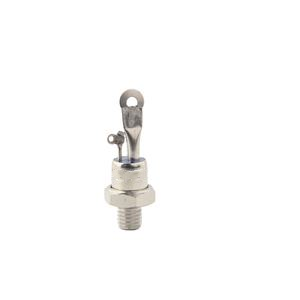
(Phase Controlled Thyristor)
REQUEST A QUOTE
RELATED PRODUCTS

Professional Phase Control Thyristor KP1500

New and Original Phase Control Thyristor 5STP18F1801
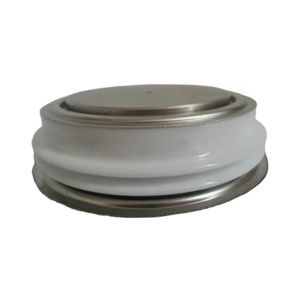
N1718NS400 SCR Thyristor for Phase Control Single Configuration
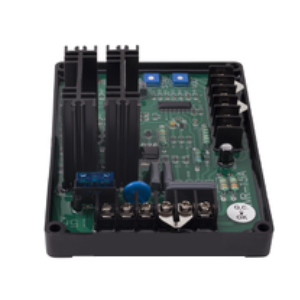
Whole KP Series SCR Thyristor 300A 500A 1600V Phase Control Thyristor
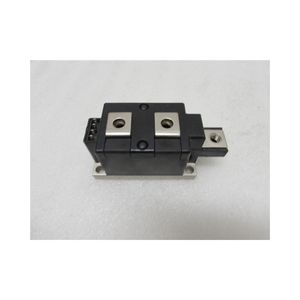
In Stock Phase Control Thyristor TT25N16OF Phase Control Thyristor Module


